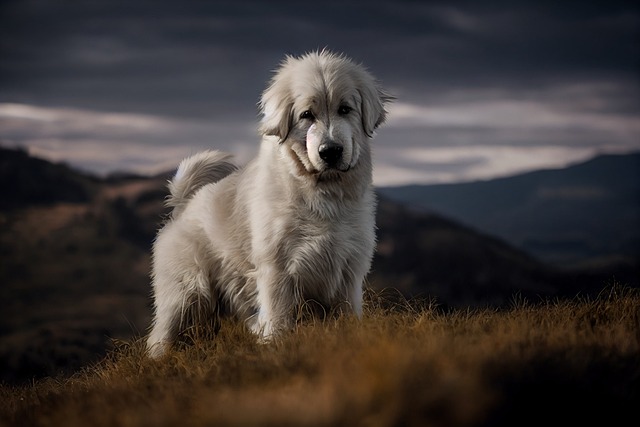In event management, coordinating VIP protection for journalists is vital. It requires collaboration between organizers, production crews, and security teams to establish safe environments, communicate effectively, and implement discreet yet robust security measures. Production crews act as a critical link, managing access, facilitating secure transportation, and ensuring the well-being of journalists in high-risk situations. Effective coordination relies on clear communication channels, regular meetings, and technology like secure messaging platforms. Security strategies include identifying risks, deploying trained personnel with modern tech, and providing dedicated assignments for VIP protection. Case studies show successful implementations, such as protecting a journalist during remote interviews, highlighting the importance of well-coordinated VIP protection for journalists in production environments.
In the dynamic world of production, coordinating seamless security protocols involves a meticulous dance between various crews and VIP protection for journalists. This article delves into the critical interplay between production teams and security professionals, exploring strategies for effective communication and implementation. From understanding specific VIP protection protocols for journalists to examining case studies of successful operations, we uncover essential practices ensuring safety and efficiency on set.
Understanding VIP Protection Protocols for Journalists
In the dynamic landscape of event management, coordinating VIP protection for journalists is an integral aspect of ensuring seamless security protocols. Journalists, as vital members of the media, often require specialized safety measures when attending high-profile events. This includes understanding and adhering to specific VIP protection protocols that prioritize their well-being while facilitating access and coverage.
Effective coordination involves close collaboration between production crews, event organizers, and security personnel. It entails establishing clear communication channels, defining safe zones, and implementing discreet yet robust security measures. By integrating these protocols into the overall event plan, production crews can ensure journalists feel secure, enabling them to focus on their professional duties without constant concern for their safety. This harmonious coordination is pivotal in creating an environment conducive to dynamic media engagement during major events.
The Role of Production Crews in Security Operations
In any event or production, especially those involving high-profile individuals like celebrities and journalists, the role of production crews is indispensable in coordinating security protocols for VIP protection. These crews serve as the ground troops, ensuring that all on-set activities adhere to safety measures and contingency plans. They facilitate smooth operations by acting as liaison between security personnel, talent, and crew members, addressing any immediate concerns or potential hazards that arise during production.
For instance, in cases where journalists require VIP protection, production crews play a pivotal role in facilitating secure transportation, setting up discreet yet effective protection zones, and managing access to set areas. Their proactive approach helps prevent security breaches, ensuring the safety and peace of mind for all involved, particularly in high-pressure situations or environments with heightened security risks.
Communication Strategies for Seamless Coordination
Effective communication is key when coordinating security protocols with production crews. To ensure seamless operations, establish clear channels of communication from the outset. Regular meetings and briefings should be conducted to discuss roles, responsibilities, and any specific security needs, especially regarding VIP protection for journalists. All parties involved must be well-informed about emergency procedures, evacuation plans, and access points, fostering a collaborative environment where everyone understands their contribution to overall safety.
Utilize technology to streamline communication; secure messaging platforms and shared digital documents can facilitate real-time updates and ensure everyone is on the same page. Regularly scheduled check-ins allow for addressing any concerns or changes promptly, enabling quick adjustments to security protocols as production progresses. This proactive approach enhances collaboration, ensuring a swift response to potential issues, particularly in dynamic environments where flexibility is crucial.
Implementing Effective Security Measures on Set
Implementing robust security measures is essential for a seamless production process, especially when dealing with high-profile events or VIPs like journalists. The first step involves identifying potential risks and vulnerabilities on set, which could range from crowd control to securing sensitive equipment. Once these areas are identified, a comprehensive plan can be devised. This includes deploying trained security personnel who understand the unique dynamics of film sets, ensuring they are equipped with the latest technology for efficient operations.
For VIP protection for journalists, dedicated personnel should be assigned to ensure their safety and comfort. This might involve setting up secure access points, providing discreet yet effective surveillance, and establishing clear communication channels between the production crew and security teams. By integrating these measures seamlessly into the overall production workflow, the crew can maintain a safe environment while facilitating the creative process.
Case Studies: Successful VIP Protection in Production Environments
In recent years, the entertainment industry has seen a surge in demand for VIP protection services, particularly in production environments. Case studies abound highlighting successful implementations where security protocols were seamlessly integrated with production crews to ensure the safety and smooth operations of high-profile individuals, such as journalists covering sensitive stories.
For instance, one notable case involved a renowned investigative journalist who required discreet yet robust VIP protection during a series of interviews at various remote locations. The security team worked hand-in-hand with the production crew, understanding the unique challenges posed by the dynamic nature of film sets. Through effective communication and coordination, they established a comprehensive plan that included advanced threat assessments, close personal protection, and seamless integration into the production schedule. This collaborative approach not only ensured the journalist’s safety but also allowed for uninterrupted filming, demonstrating the power of well-coordinated VIP protection in production environments.
Effective coordination between production crews and security personnel is vital for ensuring seamless VIP protection for journalists on set. By implementing clear communication strategies, adhering to robust security protocols, and learning from successful case studies, production environments can foster a secure atmosphere that enables journalists to focus on their work without compromise. This collaborative approach not only guarantees the safety of VIPs but also enhances the overall efficiency and productivity of film and television sets.
